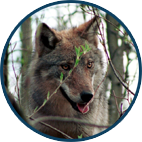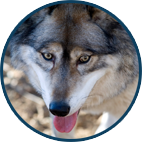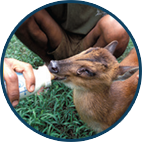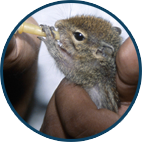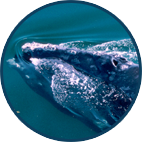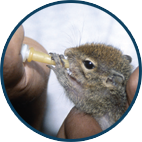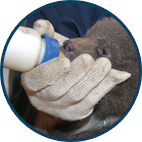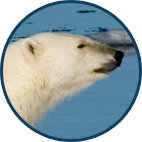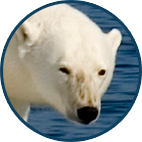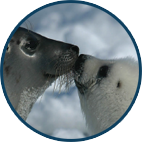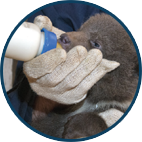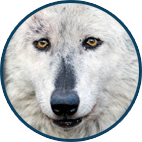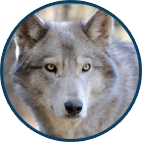
Here are your free Animal Ambassador activities—ready to use right away!
- Receive emails throughout the school year as new resources post.
Or visit www.themailbox.com/ifaw-freeresources to download free materials anytime! - Activities highlight animal-related holidays and special events—use them on the designated day or anytime.
- All materials are correlated to Common Core—use them anytime!
Your students will benefit from building core skills while learning about fascinating creatures!


- Of the more than 400 different kinds of sharks, IFAW considers about 25 species to be critically endangered or endangered. More than 80 other species are vulnerable or near threatened.
- About 100 million sharks are killed each year—many only for their fins, which are used to make shark fin soup (a delicacy in some Asian countries).
- A whale shark is the biggest kind of shark and the biggest kind of fish. It can be up to 40 feet long—about the same length as 10 eight-year-olds lying in a straight line.
- Some sharks eat plankton and small fish, while others eat other sharks, swordfish, tuna, and sea lions.

- Wolves have strong senses of sight, hearing, and smell, which makes them keen hunters. Wolves are members of the dog family.
- The American gray wolf population was added to the Endangered Species Act in 1973 when only a few hundred of these wolves remained. The population has recovered in some areas of the country but not in others.
- As wolves' habitats are developed by humans, wolf populations get cut off from one another. Wolves are also hunted in many regions.
- Wolves are shy animals. Usually when they encounter humans, they run away.

- Elephants are the largest land animals. Adults are about 10 feet tall. That's as tall as a basketball hoop. Some can weigh almost as much as six cars.
- An elephant's two long front teeth are called tusks. Tusks can be ten feet long. Elephants carry things with their tusks. They also use them to dig for water and food.
- Elephants spend 16 to 20 hours a day eating. An elephant can eat 400 pounds of food a day.
- Millions of wild elephants once roamed the continents of Africa and Asia. But today, between 472,000 and 600,000 elephants remain in the wild. Many have been illegally killed for their tusks, which are made of a substance called ivory. Others have lost their habitats due to the development of roads, cities, and towns.
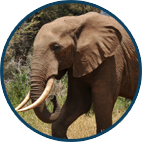
The Big Picture
Grades K-2
CCSS: RI.1.1, RI.1.7; RI.2.1, RI.2.7;
SL.1.1–2, SL.2.1–2
identifying key ideas and key details, collaborative discussions

Elephant Families
Grades K-2
CCSS: RI.1.4; RI.2.4
determining meaning

More Space, Please!
Grades 3-5
CCSS: RI.4.1, 4;
RI.5.1, 4
reading for information

Building Knowledge
Grades 3-5
CCSS: SL.3.2; SL.4.2; SL.5.2; RI.3.1;
RI.4.1; RI.5.1
determining main ideas and supporting details, summarizing, referring to text details

- Dogs can be all shapes and sizes. The smallest dogs are about a pound, and the largest can be over 200 pounds.
- Dogs use their tails for communication and balance. A dog's tail tells you a lot about how the dog is feeling.
- Dogs provide friendship and fun. Sometimes dogs do work for humans too. In return, dogs need proper food, water, veterinary care, companionship, and shelter.

Cats, Dogs, and Us
Grades K-2
CCSS: 1.MD.C.4; 2.MD.D.10
bar graphs

Video
Grades K-2
CCSS: W.3.7, SL.3.1b, SL.3.2; W.4.7, SL.4.1b, SL.4.2; W.5.7, SL.5.1b, SL.5.2
conducting research projects, collaborative discussions, main idea and supporting details

Too Many Dogs
Grades 3-5
CCSS: RI.3.1, SL.3.1; RI.4.1, SL.4.1;
RI.5.1, SL.5.1
demonstrating understanding of a text, drawing inferences, collaborative discussions


- There are between three and 30 million animal species living on our planet, but fewer than two million have been scientifically accounted for.
- About one fifth of all known mammals and 12 percent of all known birds are threatened with extinction.
- An alarming 8,462 species of animals—from insects and shellfish to gorillas and elephants—are considered at risk. There are more than 700 in the United States alone.

Habitat Protection Pledge
Grades K-2, 3-5
CCSS: RI.2.1;
RI.2.2; RI.2.4
reading for information

Ready to Write About...Backyard Wildlife
Grades K-2
CCSS: W.1.1-3;
W.2.1-3
writing prompts

What's Your View?
Grades 3-5
CCSS: SL.3.1-2;
SL.4.1-2; SL.5.1-2
collaborative discussions, main idea and supporting details, summarizing
New! Youth around the world speak out for wildlife. Click here to see more..

- Dogs have an amazing sense of smell—10,000 times better than humans.
- Dogs do many different jobs for humans. They herd sheep and cows, guard property, pull sleds, and aid those with disabilities.
- All dogs came from one ancestor—the wolf. Scientists say that wolves and dogs are actually the same species.
- As dogs were domesticated, humans took on the responsibility of providing the essentials, including food, water, veterinary care, companionship, and a safe shelter. Remind students that families should consider all of these responsibilities before adopting a puppy.

- Seals are so well insulated they can overheat. To cool down in warmer climates, they bury themselves in the cool sand. To cool off in the water, fur seals and sea lions wave their hind flippers above the water.
- In some parts of the world baby seals are hunted and killed for their skins, which are sold to make luxury goods. IFAW was founded to stop these seal hunts.
- While many countries have banned the import of products made from harp and hooded seals, other countries have continued supporting seal hunts.

Seal Sort
Grades K-2
reading for information

Making Waves for Seals
Grades K-2
CCSS: RI.2.5-6
reading for information

Ready to Write…
About Seals!
Grades 3-5
CCSS:W.3.2-3;
W.4.2-3; W.5.2-3
journal prompts

Making Waves for Seals
Grades 3-5
CCSS: RI.3.5
reading for information
Download the Making Waves for Seals Teacher's Guide and more at http://www.ifaw.org/united-states/our-work/education/making-waves-seals.

- A shark is a kind of fish. There are more than 400 different kinds of sharks.
- Sharks live in ocean waters all over the world, but are most commonly found in warm seas.
- About 100 million sharks are caught each year—many only for their fins, which are used to make shark fin soup. This dish is a delicacy in some Asian countries. Other sharks get caught in fishing nets or suffer when their natural habitats are lost through development.
- IFAW considers about 25 species of sharks to be critically endangered or endangered and more than 80 others to be vulnerable or near threatened.

- Tigers used to live all across Asia. As few as 3,000–4,000 tigers remain in the wild. These are mostly Bengal tigers, along with Amur (or Siberian) tigers, Indochinese tigers, and Sumatran tigers.
- During the 20th century, three types of tigers disappeared forever: Caspian tigers, Javan tigers, and Bali tigers. The South China tiger may be extinct in the wild as well.
- Tigers need to live near their food source—large, hoofed animals such as deer and wild pigs. They also need water and dense plants where tigers can hide as they hunt. However humans have moved into tigers' habitats.
- Tigers have been hunted for their skins, bones, and meat. IFAW is leading the fight to protect tigers and safeguard their habitats.

- The body of a squirrel is shaped like a cylinder.
- Deer live on every continent except Antarctica.
- Rabbits live in burrows or shallow depressions in the ground called forms.

- A raptor is a bird of prey. It uses a hooked beak and strong feet and wings to hunt. Raptors hunt and eat most animals.
- Raptors that live in cold climates migrate, or move, to warm places in winter. Some travel alone. Others travel in groups made of thousands of birds.
- Even though raptors are strong, they are still in danger. Raptors are losing their habitats.

- Each year thousands of seals drown while trapped in fishing nets.
- Others suffer from poisonous chemicals that are dumped into the ocean.
- Seals are affected by warming seas, which decrease the ice where seals go to give birth.
- As humans develop more coastal areas and ship traffic increases, seals get cut off from their natural habitats.
- Some countries allow seals and seal pups to be hunted, oftentimes for their fur. Between 2003 and 2005, more than a million seals were hunted in Canada.
- One-third of all species of seals are at risk for extinction; the Mediterranean monk seal is among the most threatened.


- Most kinds of baleen whales (those that feed mainly on plankton and small fish by straining them from the water) spend summer months in the cool Arctic waters. Then, before the polar waters freeze, they migrate south to spend winter months in warmer waters. Different species migrate at different times and go different distances.
- Blue whales can grow to the size of a jumbo jet and weigh 200 tons.
- A whale's heart can be the size of a small car but its ear is smaller than a pea.
- The tongue of a humpback whale is longer than a minivan.

- The body of a squirrel is shaped like a cylinder.
- Deer live on every continent except Antarctica.
- Rabbits live in burrows or shallow depressions in the ground called forms.

- Most wild bears are found north of the equator.
- Did you know the largest carnivore (meat eater) that lives on land is the Alaskan brown bear? It grows about 9 feet (2.7 meters) long and may weigh up to 1,700 pounds (770 kilograms).
- Bears often wander far in search of food. A grizzly bear may claim an area of 10 to 12 square miles (26 to 31 square kilometers) as its private hunting ground.
- The International Fund for Animal Welfare operates a Bear Rescue Center in Russia. The center has successfully returned more than 150 bears to the wild. Many of the bears were orphaned as cubs too young to survive on their own; oftentimes the mother bears were killed as part of an illegal bear hunt.

- Whales are so big that a person could crawl through a whale's arteries.
- Whales are at risk in our oceans due in part to increased shipping traffic, pollution, and commercial whale hunts.
- Right whales swim slowly and near the surface, so they can easily be injured by boats. The International Fund for Animal Welfare worked with scientists to develop an iPad app that alerts boat captains if a right whale is swimming nearby. Only about 400 right whales survive in our oceans, so they must be protected.

- Polar bears are big! An adult male can be from 7.5 to 8.5 feet (2.3 to 2.6 meters) long and weigh more than 1,300 pounds (590 kilograms). The females are big too. An adult female polar bear is about 6.5 feet (2.0 meters) long and weighs 330 to 550 pounds (150 to 250 kilograms).
- Did you know a polar bear's light-colored fur hides black skin? Its fur, along with its large size and thick layers of fat, protect polar bears from the bitter cold. The fur also helps polar bears hide in the snow when they are hunting for food.
- Polar bears are at risk. As the Arctic ice melts, these bears have to travel farther to hunt for prey. The polar bears' habitat must be preserved.


- Experts believe that China was the birthplace of the world's first tigers two million years ago. Very few, if any, wild tigers live in China today.
- As few as 3,000 tigers remain in the wild. Most of these are Bengal tigers.
- Every tiger has a different pattern of stripes. These patterns help tigers hide in the forests and grasslands where most of them live.

- The scientific name for seals is pinnipeds, which means fin-footed and refers to their webbed feet.
- These are divided into three families or groups: earless seals, eared seals, and walruses.
- Seals range in size from small female fur seals of about 110 pounds (50 kilograms) to huge male northern elephant seals weighing almost four tons (3,600 kilograms).
- When toxic substances are dumped in our oceans, these substances can harm sea life. Scientists believe that the seal population in the Baltic Sea is declining because of pollutants.

- Most wild bears are found north of the equator.
- Did you know the largest carnivore (meat eater) that lives on land is the Alaskan brown bear? It grows about 9 feet (2.7 meters) long and may weigh up to 1,700 pounds (770 kilograms).
- Bears often wander far in search of food. A grizzly bear may claim an area of 10 to 12 square miles (26 to 31 square kilometers) as its private hunting ground.
- The International Fund for Animal Welfare operates a Bear Rescue Center in Russia. The center has successfully returned more than 150 bears to the wild. Many of the bears were orphaned as cubs; the mother bears were killed in an illegal bear hunt.

- Wolves are one of the biggest members of the dog family.
- Wolves live in packs of eight to 20 members.
- Wolves have strong senses of sight, hearing, and smell. This makes them keen hunters.
- As wolves' habitats are developed by humans, wolf populations get cut off from one another, and the species suffers. Wolves are also hunted in many regions.
- Wolves are under threat around the world. The Ethiopian wolf is endangered, with perhaps as few as 200 adults remaining. In North America, the red wolf was extinct in the wild; the U.S. Fish & Wildlife Service reintroduced the species in eastern North Carolina. Currently there are less than 150 adult red wolves in the wild.

- A habitat is a place where an organism usually lives. Students encounter lots of different habitats every day, from small anthills and blades of grass to larger ponds, lakes, forests, and fields.
- A habitat must meet an organism's needs.
- One habitat may be the home to many organisms.
- Teach students not to disturb animals' habitats. After all, they wouldn't want animals to disrupt their homes!

- Cats are amazing animals. They have been part of our art and culture for 9,000 years. Ancient Egyptians worshipped cats, among other animals.
- Cats can run about 31 mph/50 kph.
- Domestic cats have many things in common with their relatives, including tigers, lions, and leopards. They all have long, powerful bodies, strong jaws, and 30 sharp teeth.
- As cats were domesticated (began living with humans), we took on responsibility to care for their needs, including providing food and water, friendship and attention, veterinary care, and a safe place to live.
More resources will be posted soon!
To download additional free educational resources from IFAW, click here.
To return to TheMailbox.com, click here.


